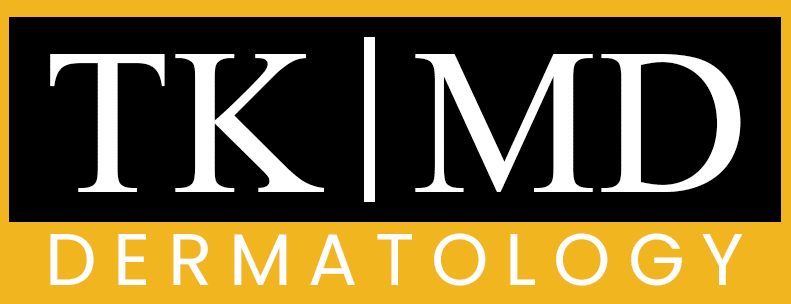Shingles, a painful and often debilitating condition, arises from the reactivation of the varicella-zoster virus, which is the same virus responsible for chickenpox. For many of us, the initial encounter with this virus occurs during childhood, leading to a bout of chickenpox that typically resolves without complications. However, the virus does not completely leave our bodies; instead, it lies dormant in our nerve tissues.
Under certain circumstances, this dormant virus can reactivate, resulting in shingles. Understanding the mechanisms behind this activation is crucial for both prevention and management of the condition. As we delve into the factors that contribute to shingles activation, we recognize that it is not merely a random occurrence.
Various elements can influence whether the virus reemerges, including our age, stress levels, and overall health. By exploring these factors in detail, we can better equip ourselves with knowledge that may help mitigate the risk of developing shingles. This article aims to provide a comprehensive overview of the varicella-zoster virus, the risk factors associated with shingles activation, and the importance of vaccination in preventing this painful condition.
Key Takeaways
- Shingles is a painful rash caused by the reactivation of the varicella-zoster virus, the same virus that causes chickenpox.
- The varicella-zoster virus can remain dormant in the body and reactivate later in life, leading to shingles.
- Risk factors for shingles activation include age, weakened immune system, medical conditions, medications, trauma, and stress.
- Stress can weaken the immune system and trigger the reactivation of the varicella-zoster virus, leading to shingles.
- Vaccination can help prevent shingles activation by boosting the immune system’s ability to fight off the varicella-zoster virus.
Understanding the Varicella-Zoster Virus
Initial Infection and Latency
After experiencing chickenpox, characterized by an itchy rash and flu-like symptoms, the virus becomes latent in our sensory nerve ganglia. This latency can last for years or even decades without any symptoms.
Reactivation and Shingles
However, certain triggers can lead to the reactivation of VZV, resulting in shingles, which manifests as a painful rash typically confined to one side of the body. When VZV reactivates, it travels along nerve pathways to the skin, causing inflammation and pain. The rash associated with shingles usually appears as clusters of blisters that eventually crust over.
Complications and Importance of Monitoring Health
The pain can be severe and may persist even after the rash has healed, a condition known as postherpetic neuralgia. Understanding the nature of VZV helps us appreciate why some individuals are more susceptible to shingles than others and highlights the importance of monitoring our health as we age.
Risk Factors for Shingles Activation

Several risk factors contribute to the likelihood of shingles activation, and recognizing these can empower us to take proactive measures. One of the most significant risk factors is age; as we grow older, our immune system naturally weakens, making it easier for dormant viruses to reactivate. Studies have shown that individuals over the age of 50 are at a higher risk for developing shingles, with the incidence increasing significantly in those over 60.
In addition to age, other risk factors include stress levels and underlying health conditions. Chronic stress can take a toll on our immune system, making it less effective at keeping dormant viruses in check. Furthermore, certain medical conditions such as diabetes or autoimmune diseases can compromise our immune response, increasing the likelihood of shingles activation.
By understanding these risk factors, we can better assess our own vulnerability and take steps to reduce our risk.
Stress and Shingles Activation
Stress is a well-documented trigger for various health issues, including shingles activation. When we experience stress, our bodies produce hormones such as cortisol that can suppress immune function. This suppression can create an environment where dormant viruses like VZV are more likely to reactivate.
The relationship between stress and shingles is particularly concerning because many of us lead increasingly busy lives filled with personal and professional pressures. Moreover, stress can manifest in various forms—emotional stress from life events or chronic stress from ongoing challenges—and each type can impact our immune system differently. It is essential for us to recognize when we are under significant stress and to implement coping strategies that promote relaxation and well-being.
Techniques such as mindfulness meditation, regular exercise, and maintaining social connections can help mitigate stress levels and potentially reduce our risk of shingles activation.
Weakened Immune System and Shingles Activation
A weakened immune system is another critical factor that can lead to shingles activation. Our immune system plays a vital role in keeping dormant viruses at bay; when it is compromised due to illness or other factors, we become more susceptible to infections and reactivations. Conditions such as HIV/AIDS or cancer can severely weaken our immune response, making it easier for VZV to reactivate.
Additionally, lifestyle choices can also impact our immune health. Poor nutrition, lack of sleep, and sedentary behavior can all contribute to a weakened immune system. As we navigate our daily lives, it is essential for us to prioritize our health by adopting habits that support immune function.
This includes eating a balanced diet rich in vitamins and minerals, getting adequate rest, and engaging in regular physical activity.
Age and Shingles Activation

The Role of Age in Shingles Activation
Age is a critical factor in the activation of shingles. As we age, our immune system naturally declines in efficiency, a process known as immunosenescence. This decline makes it increasingly difficult for our bodies to keep latent viruses under control.
### The Increased Risk with Age
Research indicates that individuals over 50 are at a substantially higher risk for developing shingles compared to younger individuals. The incidence of shingles continues to rise with age; those over 80 are particularly vulnerable. This increased risk underscores the importance of awareness among older adults regarding shingles symptoms and potential complications.
### The Importance of Awareness and Prevention
By understanding that age is a critical factor in shingles activation, we can encourage ourselves and our loved ones to seek preventive measures such as vaccination.
Medical Conditions and Shingles Activation
Certain medical conditions can significantly increase our risk of shingles activation by compromising our immune systems. For instance, individuals with autoimmune diseases like rheumatoid arthritis or lupus may be more susceptible due to their bodies’ ongoing battle against perceived threats. Similarly, those undergoing treatments for cancer—such as chemotherapy or radiation—often experience weakened immune responses that heighten their vulnerability to infections like shingles.
Chronic illnesses such as diabetes also play a role in increasing the risk of shingles activation. The relationship between these conditions and shingles highlights the importance of managing our health proactively. Regular check-ups with healthcare providers can help us monitor any underlying conditions and take appropriate steps to minimize our risk of complications associated with shingles.
Medications and Shingles Activation
Certain medications can also contribute to an increased risk of shingles activation by suppressing the immune system. For example, corticosteroids are commonly prescribed for various inflammatory conditions but can weaken immune responses when used long-term. Similarly, immunosuppressive drugs used in organ transplant patients or those with autoimmune disorders can leave individuals more vulnerable to infections like shingles.
As we navigate our healthcare journeys, it is crucial for us to have open discussions with our healthcare providers about any medications we are taking and their potential side effects. Understanding how these medications may impact our immune function allows us to make informed decisions about our treatment options while also considering preventive measures against shingles.
Trauma and Shingles Activation
Physical trauma or injury can also serve as a trigger for shingles activation. When we experience significant physical stress—whether from an accident, surgery, or other forms of trauma—our bodies may respond by weakening our immune defenses temporarily. This weakened state can create an opportunity for dormant viruses like VZV to reactivate.
Moreover, emotional trauma can have similar effects on our immune system as physical trauma does. The body’s response to trauma often involves increased stress levels and hormonal changes that may compromise immune function. Recognizing the potential link between trauma and shingles activation encourages us to prioritize both physical and emotional well-being in our lives.
Understanding the Role of Vaccination in Shingles Activation
Vaccination plays a crucial role in preventing shingles activation by bolstering our immune response against the varicella-zoster virus. The shingles vaccine is recommended for adults over 50 years old and has been shown to significantly reduce the incidence of shingles as well as its associated complications. By receiving this vaccine, we not only protect ourselves but also contribute to community immunity.
The vaccine works by stimulating our immune system to recognize and respond more effectively if VZV reactivates.
Even if we do develop shingles after vaccination, studies indicate that vaccinated individuals tend to experience milder symptoms and a lower risk of postherpetic neuralgia compared to those who are unvaccinated. Understanding the importance of vaccination empowers us to take proactive steps toward safeguarding our health against this painful condition.
Conclusion and Prevention of Shingles Activation
In conclusion, understanding shingles activation requires us to consider various interconnected factors such as age, stress levels, medical conditions, medications, trauma, and vaccination status. By recognizing these elements, we can take proactive steps toward reducing our risk of developing shingles. Prioritizing stress management techniques, maintaining a healthy lifestyle, managing chronic conditions effectively, and discussing medication options with healthcare providers are all essential strategies.
Furthermore, vaccination remains one of the most effective ways to prevent shingles activation and its complications.
As we navigate through life’s challenges, let us remain vigilant about our health and well-being while encouraging those around us to do the same. By fostering awareness about shingles activation and its risk factors, we empower ourselves and others to take charge of our health and reduce the burden of this painful condition on our lives.
If you are interested in learning more about dermatological conditions and treatments, you may want to check out Dr. Trisha Khanna’s article on understanding what causes shingles to activate. In addition, you can also explore her website to find a store locator for her skincare products (store locator), information on laser energy treatments for cosmetic dermatology (laser energy treatments), and details on medical dermatology services such as wart removal (warts). Dr. Khanna’s expertise and resources can help you better understand and manage various skin conditions.
FAQs
What is shingles?
Shingles is a viral infection that causes a painful rash. It is caused by the varicella-zoster virus, which is the same virus that causes chickenpox.
What causes shingles to activate?
Shingles can be activated when the varicella-zoster virus, which remains dormant in the body after a person has had chickenpox, becomes reactivated. The exact cause of this reactivation is not fully understood, but it is believed to be linked to a weakened immune system, stress, aging, or certain medical conditions.
Can stress trigger shingles?
Yes, stress is considered a common trigger for shingles. High levels of stress can weaken the immune system, making it easier for the varicella-zoster virus to reactivate and cause shingles.
Can shingles be contagious?
Yes, shingles can be contagious, but a person with shingles can only spread the virus through direct contact with the rash. The virus can cause chickenpox in someone who has not had chickenpox or the chickenpox vaccine.
Is there a vaccine to prevent shingles?
Yes, there is a shingles vaccine that can help prevent shingles or reduce the severity of the symptoms. It is recommended for adults over the age of 50, especially those with weakened immune systems.
What are the common symptoms of shingles?
The common symptoms of shingles include a painful rash that develops into fluid-filled blisters, itching, burning, and tingling sensations, and general flu-like symptoms such as fever, headache, and fatigue.


